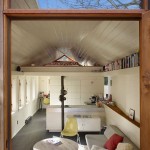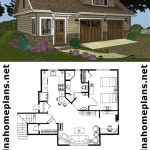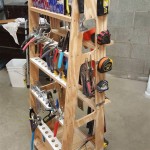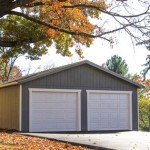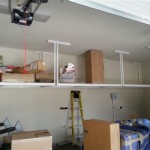Making The Most Of Your Appliance Garage Kitchen Cabinets
Appliance garages, also known as appliance nooks or retractable appliance centers, represent a functional and aesthetically pleasing solution for managing countertop clutter in the modern kitchen. These specialized kitchen cabinets are designed to conceal small appliances, such as toasters, blenders, coffee makers, and food processors, behind a door or retractable mechanism. This design strategy conserves valuable counter space, improving the overall organization and visual appeal of the kitchen environment. Optimizing the use of an appliance garage requires careful planning and consideration of various factors, including size, placement, internal organization, and electrical accessibility.
The fundamental purpose of an appliance garage is to consolidate and conceal appliances that are regularly used but not necessarily constantly displayed. In kitchens where countertop space is at a premium, an appliance garage provides a dedicated, out-of-sight storage area, preventing visual clutter and promoting a more streamlined and organized look. Furthermore, by keeping appliances stored within a cabinet, they are protected from dust, grease, and other kitchen contaminants, extending their lifespan and maintaining their cleanliness.
Strategic Planning and Design Considerations
Before integrating an appliance garage into a kitchen design, crucial planning steps must be undertaken to ensure its functionality and efficiency. The first step involves evaluating the specific appliances that will be housed within the garage. Measuring the height, width, and depth of each appliance is essential to determine the required dimensions of the cabinet. Sufficient allowance for ventilation and easy access should also be included in these measurements.
The location of the appliance garage within the kitchen layout is another critical factor. Ideally, the garage should be situated in a convenient location near the primary food preparation area. Positioning it close to electrical outlets is also paramount, as this minimizes the need for unsightly extension cords and ensures a safe and functional operating environment. Consider proximity to the sink and other frequently used areas to optimize workflow and convenience.
Choosing the appropriate door mechanism is also important. Options include hinged doors, bi-fold doors, roll-up doors, and slide-out shelves. Hinged doors are a common and cost-effective choice, while bi-fold doors provide a wider opening and require less clearance when opened. Roll-up doors, often made of tambour material, offer a sleek and modern look, retracting vertically and maximizing access. Slide-out shelves allow for appliances to be pulled forward for easier use, without removing them completely from the garage.
The aesthetic integration of the appliance garage with the existing cabinetry is crucial for a cohesive kitchen design. Matching the style, color, and material of the appliance garage to the surrounding cabinets ensures a seamless and unified appearance. Custom cabinetry options allow for complete control over the design, while semi-custom and stock cabinets offer more budget-friendly alternatives.
Maximizing Internal Organization and Functionality
The internal organization of the appliance garage is as important as its external design. Implementing features that enhance usability and efficiency will greatly improve the overall effectiveness of the space. Adjustable shelves are a valuable addition, allowing for customized storage configurations to accommodate appliances of varying sizes. These shelves can be easily repositioned to maximize vertical space and prevent wasted areas.
Consider installing pull-out shelves or trays for appliances that are frequently used. These features enable easy access to appliances without requiring them to be lifted or moved. For example, a pull-out shelf for a heavy stand mixer can significantly reduce strain and effort during baking activities.
Good lighting is critical within the appliance garage to ensure visibility. Installing under-cabinet lighting or interior LED strips illuminates the space, making it easier to locate and use appliances. This is particularly important for garages that are located in darker corners of the kitchen.
Incorporating power outlets inside the appliance garage eliminates the need to move appliances to an external outlet for use. This simplifies appliance operation and keeps countertops clear of cords. Ensure that the electrical outlets are properly installed and meet safety standards. Consider adding USB ports for charging mobile devices, providing additional functionality.
Cord management solutions are essential for maintaining a neat and organized space. Cord organizers, clips, and wraps can prevent tangled cords and keep the interior of the appliance garage looking tidy. These accessories also enhance safety by minimizing the risk of tripping or electrical hazards.
Addressing Practical Considerations and Potential Challenges
When planning an appliance garage, several practical considerations must be addressed to ensure its long-term functionality and usability. Ventilation is a crucial aspect, particularly for appliances that generate heat or steam, such as toasters or coffee makers. Insufficient ventilation can lead to moisture buildup, mold growth, and potential damage to the cabinet or appliances. Incorporating vents or leaving gaps around the appliances allows for proper airflow and prevents these issues.
The size of the appliance garage must be carefully considered to accommodate all intended appliances without overcrowding. Leaving adequate space around each appliance not only facilitates easy access but also prevents damage from accidental bumping or scratching. Overcrowding can also hinder ventilation and make it difficult to clean the interior of the garage.
Accessibility is another key factor. The door mechanism should be easy to operate, allowing for quick and convenient access to the appliances. The height of the appliance garage should also be considered, ensuring that it is within comfortable reach for all users. If the garage is positioned in a high location, consider using a pull-down mechanism or a sturdy step stool to facilitate access.
Cleaning and maintenance are essential for keeping the appliance garage in good condition. Regularly wiping down the interior surfaces and removing any crumbs or spills prevents the buildup of dirt and grime. Using a mild cleaning solution and a soft cloth is recommended to avoid damaging the cabinet finish. Periodically inspecting the electrical components and ventilation system ensures their proper functioning and prevents potential hazards.
Retrofitting an appliance garage into an existing kitchen can present unique challenges. Limited space, existing plumbing or electrical wiring, and the design of the existing cabinetry may require creative solutions. Consulting with a professional kitchen designer or contractor can help overcome these obstacles and ensure a successful installation. They can assess the available space, provide customized design options, and handle any necessary modifications to the existing kitchen structure.
When selecting materials for the appliance garage, durability and ease of maintenance are important considerations. Solid wood, plywood, and MDF (medium-density fiberboard) are common choices for cabinet construction. Solid wood offers a classic look and excellent durability, while plywood and MDF are more cost-effective options that can be finished to resemble solid wood. Choose materials that are resistant to moisture and stains, and consider using a durable finish that can withstand regular use and cleaning.
The incorporation of smart home technology can further enhance the functionality of an appliance garage. Smart outlets can be installed to remotely control appliances, allowing users to turn them on or off from their smartphones or voice assistants. This can be particularly useful for appliances that are used on a timer, such as coffee makers or slow cookers. Smart lighting systems can also be integrated to automatically illuminate the appliance garage when the door is opened, adding convenience and energy efficiency.
Safety should be a primary consideration when designing and using an appliance garage. Ensure that all electrical connections are properly grounded and meet local building codes. Avoid overloading electrical circuits, and never use damaged or frayed cords. Keep flammable materials away from heat-generating appliances, and regularly inspect the cabinet for any signs of damage or wear. Installing a smoke detector near the appliance garage can provide an added layer of safety and protection.
By carefully considering these planning, organization, and maintenance aspects, homeowners can maximize the utility and aesthetic appeal of their appliance garage kitchen cabinets, creating a more functional, organized, and visually pleasing kitchen environment. A well-designed and properly maintained appliance garage can significantly improve the overall kitchen experience, making daily tasks easier and more enjoyable.

What Is An Appliance Garage How To Build

The Modern Day Appliance Garage A Moveable Backsplash To Hide Our Small Appliances Chris Loves Julia

10 Appliance Garage Ideas For A Clutter Free Kitchen

How To Hide Small Appliances In Your Kitchen With An Appliance Garage

Kitchen Appliance Garage Diy Angela Marie Made

How To Diy A Kitchen Appliance Garage Semistories

The Modern Day Appliance Garage A Moveable Backsplash To Hide Our Small Appliances Chris Loves Julia

Build A Diy Appliance Garage Basic

Appliance Garage Ideas Transform Your Kitchen Into A Clutter Free Haven Decorilla Interior Design

25 Ideas For Kitchen Appliance Garages
Related Posts

